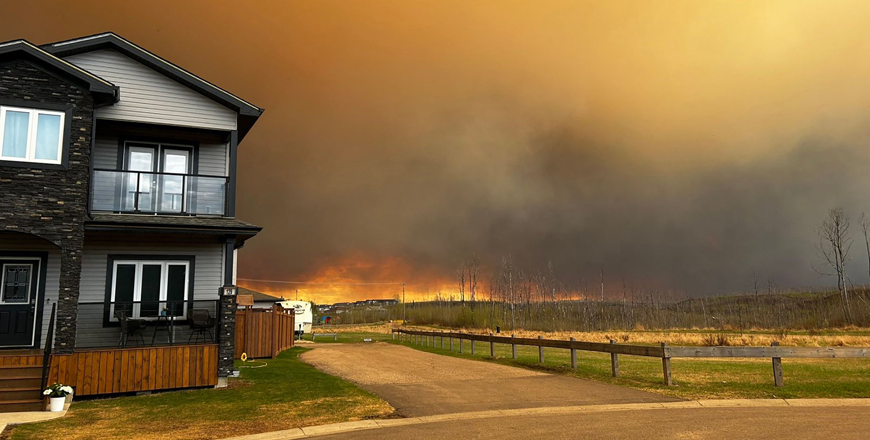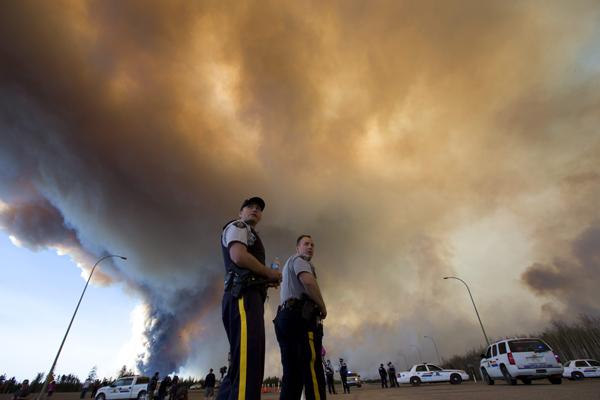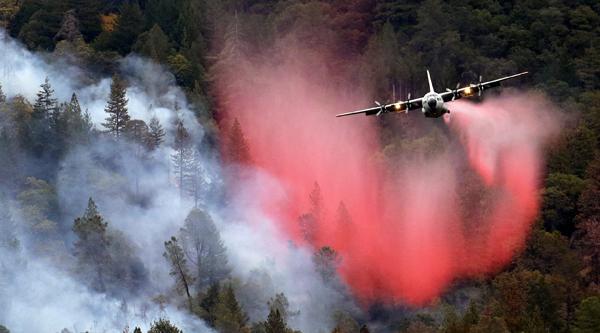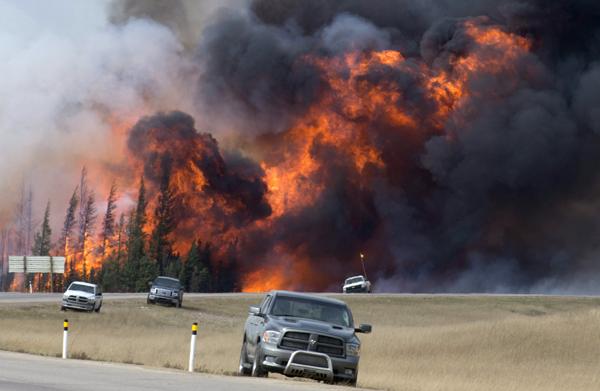You are here
Canadian oil sands city evacuated as wildfire draws near
By AFP - May 15,2024 - Last updated at May 15,2024

This handout image courtesy of Kosar shows smoke and flames from the fire in Fort McMurray, ALberta, Canada on Tuesday as residents from the area of Abasand Heights evacuate the area (AFP photo /handout /KOSAR)
FORT MCMURRAY, Canada — Thousands of residents of Fort McMurray, a city in Canada’s major oil-producing region, fled as an out-of-control wildfire drew near and thick smoke filled the skies.
Shifting winds gusting to 40 kilometers per hour fanned the flames, scorching 9,600 hectares of surrounding forests as it advanced to within 13 kilometres of the city in the western province of Alberta that had been gutted by wildfires in 2016 — one of the biggest disasters in the nation’s history.
Four neighbourhoods were ordered to evacuate and by mid-afternoon, a highway south was jammed with cars and trucks fleeing to safety against a backdrop of plumes of dark smoke glowing orange in the distance.
Resident Ashley Russell was packed and ready to leave on a moment’s notice, as the rest of the city was put on alert. “I’m experiencing a lot of anxiety. In 2016, my place burned down, so I’m reliving that,” she told AFP.
“We’re seeing extreme fire behaviour,” Alberta Wildfire spokeswoman Josee St-Onge told a news conference.
“Smoke columns are developing and the skies are covered in smoke,” she said. “Firefighters have been pulled from the fire line for safety reasons.”
Officials said the fire had grown significantly in multiple directions since Monday.
Regional fire chief Jody Butz, however, assured residents that crews were prepared, having cleared brush and erected fire barriers over the winter, and that water bombers were now dropping retardant to slow its advance.
“We are confident that we have the resources to defend these areas, but we need people out of harm’s way,” he said.
Fears of 2016 repeat
In 2016, the entire city with a population of more than 90,000 was evacuated while production of 1 million barrels of oil per day — almost one third of Canada’s total output at the time — stopped. Canada is the world’s fourth largest producer and a leading exporter of crude to the United States.
More than 2,500 homes and businesses were razed, with damage assessed at more than Can$3.7 billion. Thousands of residents never returned to the city.
Authorities have been bracing for another possibly devastating wildfire season, after Canada’s worst ever last year that saw flames burning from coast to coast and charring more than 15 million hectares of land.
Dozens of zombie fires sustained by layers of dried peat continued to smolder beneath the surface of the boreal forest through the winter, which was warmer than usual and left a smaller snowpack, while drought has persisted across the region.
In British Columbia, thousands of residents of remote towns remained under evacuation orders, while CN railway on Tuesday suspended rail service between Fort St. John and Fort Nelson, and north of High Level in Alberta “due to wildfire activity”.
Rob Fraser, the mayor of Fort Nelson told AFP: “It’s cool, it’s overcast and the wind is just very slight. If everything continues like this, you know, we just might corral this beast.”
Air quality warnings, meanwhile, have been issued across Canada and the United States as smoke from the Canadian wildfires wafted as far south as the US state of Oklahoma and over to Quebec province in the east.
Related Articles
LAC LA BICHE, Alberta — A raging Canadian wildfire grew explosively on Saturday as hot, dry winds pushed the blaze across the energy heartla
OTTAWA — Wildfires continued their devastating advance on Tuesday, leading authorities to order more evacuations in Canada's oil sands regio
GREGOIRE LAKE, Alberta — A wildfire ripping through Canada's oil sands region was set to grow rapidly on Sunday but move further away from h














